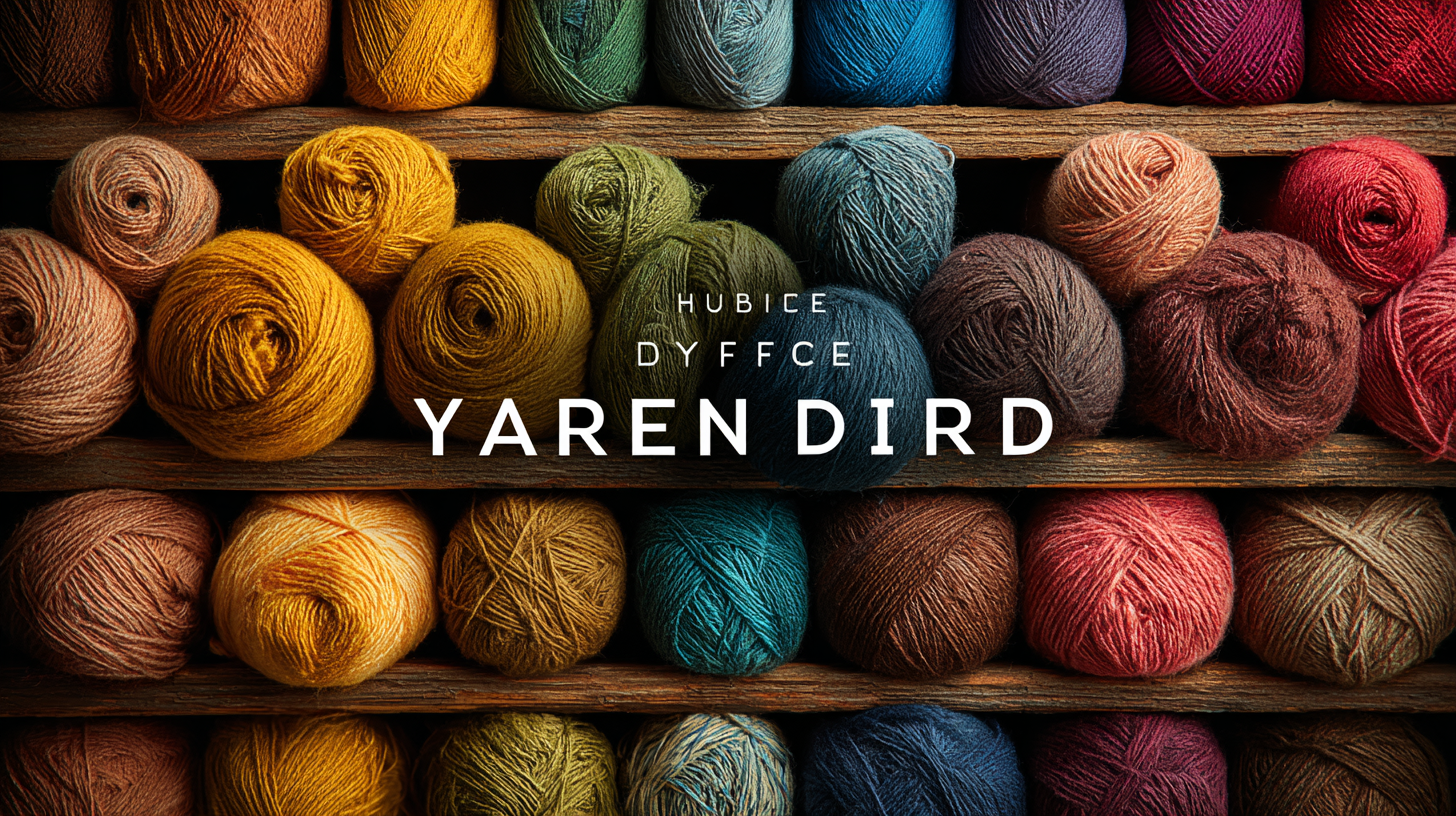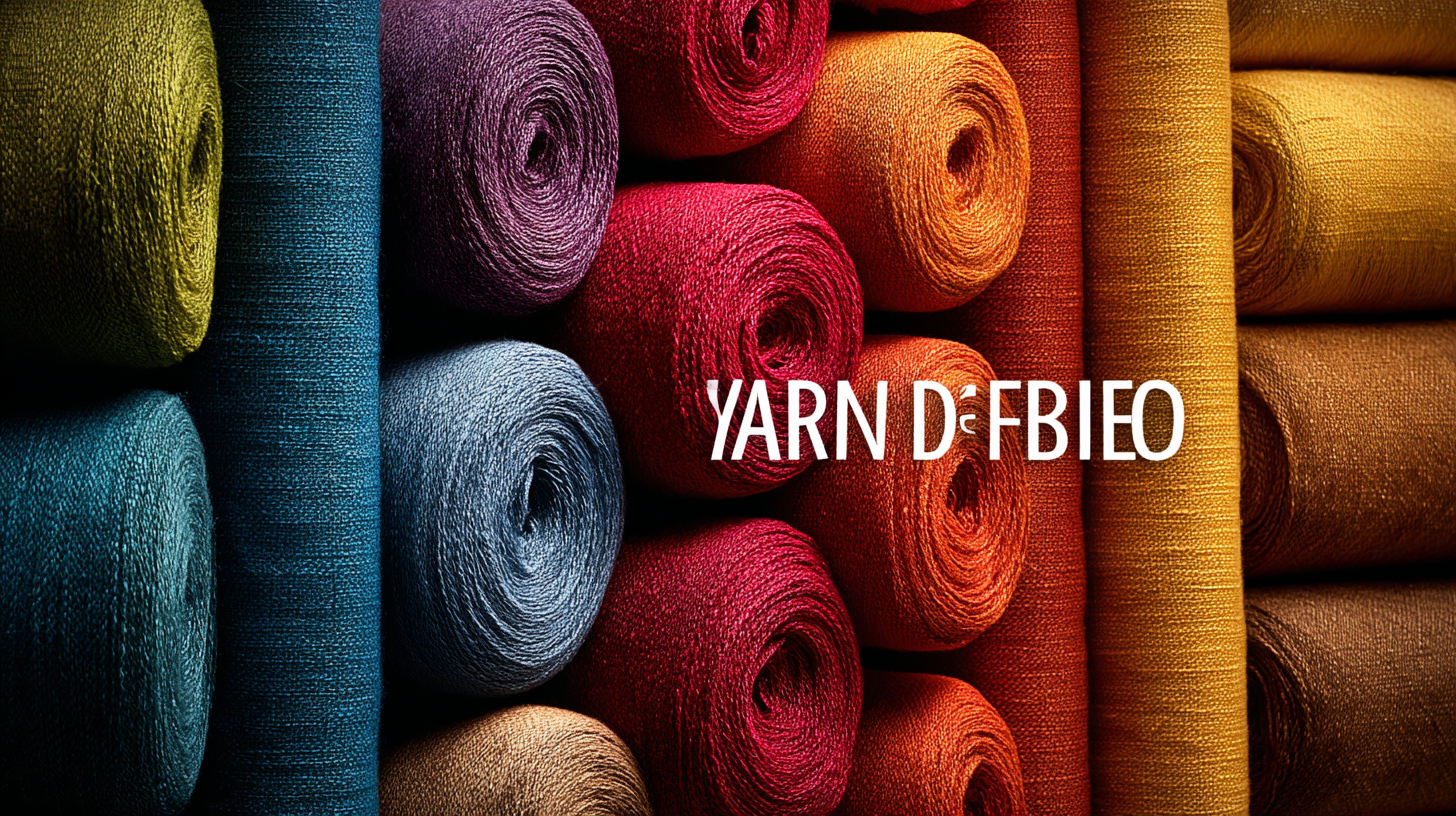 As the textile industry continues to evolve in the wake of technological advancements,
sourcing the ideal Yarn Dyed Fabric is becoming increasingly pivotal
for manufacturers aiming to compete on a global scale. According to a report by
Grand View Research, the yarn-dyed fabric market is projected to reach
USD 30 billion by 2025, driven by rising consumer demand for
high-quality textiles in fashion and home furnishings. With China
emerging as a dominant player, accounting for over 40% of global fabric exports,
the emphasis on quality has never been more pronounced. As businesses navigate this tech-driven landscape,
leveraging data analytics and sustainable practices will be essential for securing
premium yarn dyed fabrics that meet market expectations. This blog will provide an essential checklist
to guide sourcing decisions, ensuring that brands are well-equipped to succeed in an increasingly
competitive market.
As the textile industry continues to evolve in the wake of technological advancements,
sourcing the ideal Yarn Dyed Fabric is becoming increasingly pivotal
for manufacturers aiming to compete on a global scale. According to a report by
Grand View Research, the yarn-dyed fabric market is projected to reach
USD 30 billion by 2025, driven by rising consumer demand for
high-quality textiles in fashion and home furnishings. With China
emerging as a dominant player, accounting for over 40% of global fabric exports,
the emphasis on quality has never been more pronounced. As businesses navigate this tech-driven landscape,
leveraging data analytics and sustainable practices will be essential for securing
premium yarn dyed fabrics that meet market expectations. This blog will provide an essential checklist
to guide sourcing decisions, ensuring that brands are well-equipped to succeed in an increasingly
competitive market.
When it comes to selecting yarn dyed fabric in a rapidly evolving tech-driven market, understanding its key features and benefits is essential. Yarn dyed fabrics are woven from fibers that have been dyed before they are woven into cloth, resulting in vibrant colors and patterns that maintain their integrity over time. According to a report by the Textile Research Journal, yarn dyed fabrics exhibit up to 30% more colorfastness compared to their piece-dyed counterparts, making them an optimal choice for both durability and aesthetic appeal.
Moreover, the versatility of yarn dyed fabrics cannot be overstated. The global market for yarn dyed textiles is projected to grow significantly, with a compound annual growth rate (CAGR) of 4.5% from 2021 to 2026, as highlighted by a recent report from Grand View Research. This growth is driven by increased consumer demand for quality textiles that not only look great but also offer sustainability and eco-friendliness. Fabrics made from organic cotton and recycled fibers are leading this trend, with brands increasingly opting for these options to meet both regulatory standards and consumer expectations. Emphasizing these key features and benefits can guide manufacturers and retailers alike in making informed sourcing decisions as they navigate the dynamic landscape of 2025.

In today's tech-driven market, the role of technology in the yarn dyeing process is more critical than ever. Advanced technologies such as computerized dyeing machines and automated quality control systems streamline the dyeing process, enhance precision, and minimize waste. These innovations not only improve the consistency of color application but also allow for a wider range of colors and patterns, catering to the specific needs of designers and manufacturers.
Moreover, the integration of artificial intelligence and data analytics into yarn dyeing is transforming how manufacturers approach fabric sourcing. By utilizing predictive analytics, companies can forecast demand trends and optimize their dyeing processes accordingly. This foresight leads to more efficient resource management and reduces lead times, ensuring that businesses remain agile in a competitive market. As sustainable practices become increasingly important, technology also plays a vital role in creating eco-friendly dyeing solutions, meeting consumer demand for environmentally responsible fabrics while maintaining high-quality standards.

In today's tech-driven market, sourcing reliable suppliers for yarn dyed fabric requires a strategic approach, especially amidst rising prices and inflation. Organizations must prioritize a rigorous procurement strategy to adapt to these economic pressures. According to recent industry insights, implementing cost benchmarking measures can enhance procurement processes, enabling companies to secure the best value while navigating uncertainties.
**Tips: One of the best practices for effective procurement is to conduct thorough market research. Understanding current trends and supplier offerings can significantly impact your negotiation outcomes. Additionally, consider localizing your supply chain to mitigate risks associated with overseas suppliers and to strengthen reliability.**
Moreover, sustainability has become a core value for many businesses. It’s essential to partner with suppliers who adhere to social and environmental standards. This commitment not only fosters responsible procurement but also aligns with consumer expectations, enhancing brand loyalty. Reports indicate that companies focusing on sustainable sourcing practices can reduce supply chain disruptions and improve their overall resilience in the market.
**Tips: When vetting suppliers, use a comprehensive database to evaluate their compliance with sustainability norms. This adds an extra layer of security and can streamline the sourcing process. Establishing long-term relationships with dependable suppliers is vital for maintaining a steady flow of quality materials.**
| Criteria | Importance Level | Source Reliability | Tech Integration | Sustainability Practices |
|---|---|---|---|---|
| Quality of Fabric | High | High | Yes | Yes |
| Supplier Experience | Medium | Medium | Yes | No |
| Cost Competitiveness | High | High | No | Yes |
| Lead Times | Medium | Low | Yes | No |
| Technological Capabilities | High | Medium | Yes | Yes |
In the fast-evolving landscape of textile manufacturing, ensuring the quality of yarn dyed fabric has never been more critical. As suppliers increasingly leverage technology to optimize production, brands must implement robust testing methods to maintain high standards. According to the Textile World Report 2023, approximately 40% of fabric defects arise from inconsistent dyeing processes, underscoring the importance of quality assurance.
One effective method for evaluating fabric quality is the use of colorfastness tests, which measure how well the dye resists fading or running. It’s recommended to conduct ISO 105-C06 tests, which simulate various environmental factors, ensuring the fabric's durability. Additionally, utilizing the Martindale Abrasion Tester can help assess fabric wearability, important for products subjected to frequent use.
Tips: Always request comprehensive testing results from your suppliers. Establish minimum acceptable standards based on industry benchmarks to ensure compliance. Additionally, consider integrating digital inspection technologies to analyze fabric quality in real-time, providing immediate feedback and reducing production errors.
As we approach 2025, innovations in yarn dyeing are redefining the landscape of fabric sourcing. Recent highlights from industry fairs, such as Heimtextil, showcase a growing emphasis on sustainable practices, with many brands adopting waterless dyeing processes and incorporating recycled fibers. This shift is not only crucial for environmental stewardship but is also becoming a competitive advantage in a tech-driven market. According to industry reports, the global sewing thread market size is projected to reach approximately USD 4.84 billion by 2034, reflecting a robust growth trajectory influenced by these sustainable innovations.
Furthermore, the knitting industry is also undergoing a significant transformation, leveraging advancements in smart textiles and AI-driven automation. Reports indicate that by 2025, the knitting sector will increasingly embrace eco-friendly yarns and customizable textiles, enhancing both production efficiency and consumer appeal. This evolution is underscored by recent data revealing that over 560 exhibitors participated in the Yarn Expo Spring 2025, highlighting the industry's commitment to innovation and sustainability. As these trends unfold, they will undoubtedly shape the future of yarn dyed fabrics, offering exciting opportunities for sourcing in the coming years.
